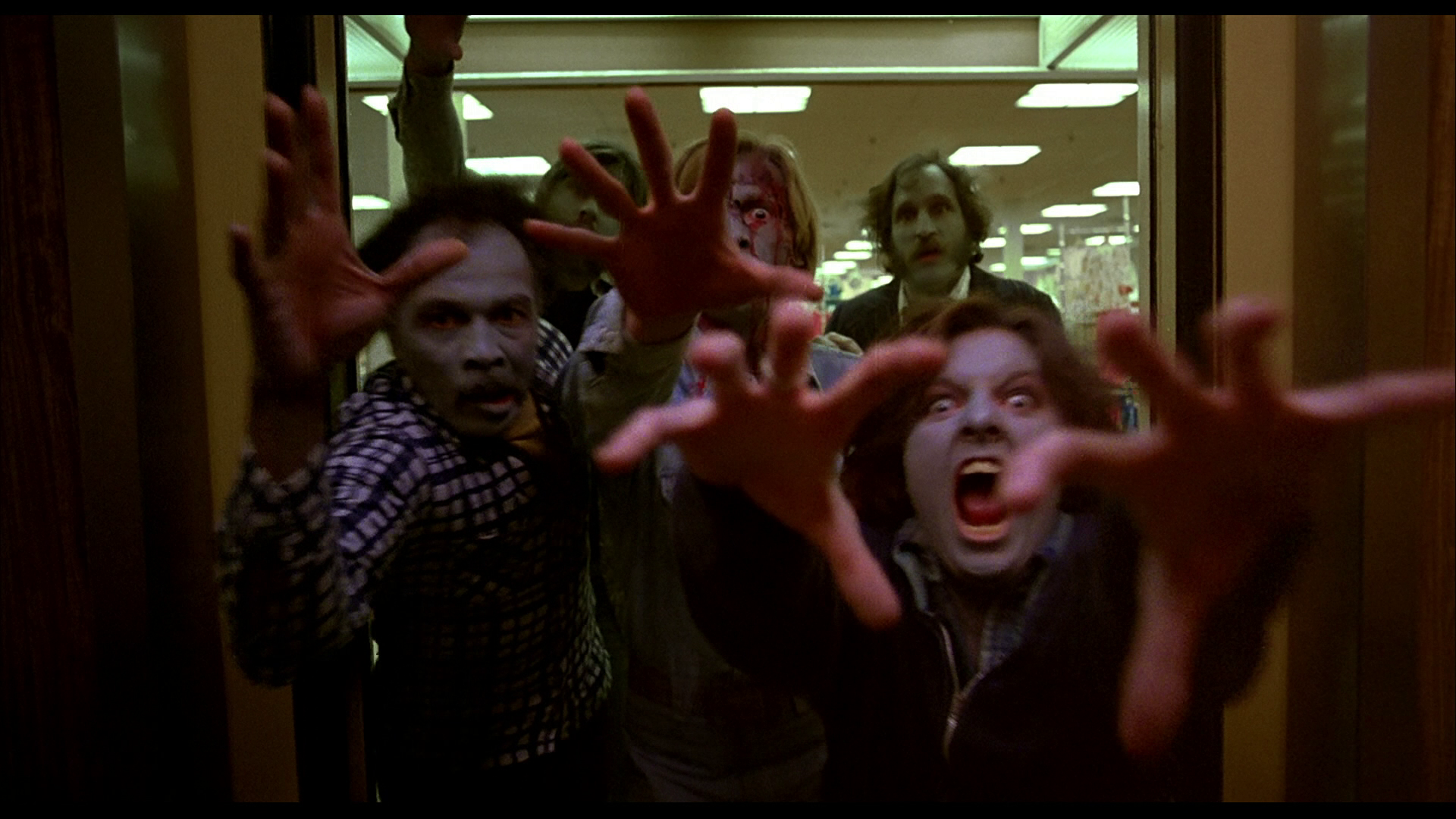We finally did it. We finally took a look at short compilations and horror anthologies—all sixty million of them—and found that there are many great ones. So many, in fact, that filmmaker Jeff Frumess teamed up with us so we could cover twice as many. Here are our five favorites.
5. Creepshow (1982)
Campy, gruesome and trashy like the comic books that inspired it, Creepshow benefits from two of the most impressive pedigrees in the genre world. Written for the screen by Stephen King and directed by George Romero, the grimly comedic film demands attention.
Though some of the shorts are less effective than others, the hits are strong enough to carry the effort.
Though the cake in “Father’s Day” remains maybe the movie’s most lasting image, the shorts “The Crate” and “Something to Tide You Over” offer the strongest bursts of horror.
Bridged with inspired comic book art bumpers, the film maintains a juvenile aesthetic that helps its mean spirit and humor land. It doesn’t hurt that getting to see Hal Holbrook, Leslie Nielsen, Ted Danson and Ed Harris wade into such garish and campy territory is forever fun.
4. The Signal (2007)
A transmission – a hypnotic frequency – broadcasting over TV, cell and landline telephones has driven the good folks of the city of Terminus crazy. David Bruckner, Dan Bush and Jacob Gentry created a film in three segments, or transmissions.
Transmission 1 introduces our lover heroes as well as the chaos. Can Mya (Anessa Ramsey) and Ben (Justin Welborn) remain sane, reunite and outrun the insanity?
Transmission 2 takes a deeply, darkly funny turn as we pick up on the illogical logic of a houseful of folks believing themselves not to have “the crazy.” The final transmission brings us full circle.
The movie capitalizes on the audience’s inability to know for certain who’s OK and who’s dangerous. Here’s what we do know, thanks to The Signal: duct tape is a powerful tool, bug spray is lethal, and crazy people can sure take a beating.
3. Fear(s) of the Dark (2007)
This animated French film brings nightmares almost too beautifully to life. The film showcases a glorious variety of black and white artistic style, each animating a different short that tells a tale of phobias, bad dreams and shadowy terror.
Though the styles change, there is a shadowy fluidity to most of these pieces that feels slippery and alarming. One piece about a man who finds refuge in an abandoned house emphasizes a slow-building dread while another tale about a grim-faced man and his menacing hounds generates more vibrant bouts of terror.
The program morphs from the supernatural to the cerebral, each piece filling the screen with disturbingly gorgeous sound and image.
The film as a whole has the feel of childhood nightmares. The collection digs into anxieties in a way far more subtle and sophisticated than what you’ll find in the balance of films on this list, but the lingering effect is haunting, even disturbing.
2. Three…Extremes (2004)
Three of the most promising genre directors Asia had to offer came together in 2004 to cast a grisly spell. Two—Chan-wook Park and Takashi Miike—would blossom into two of the most respected filmmakers in the world. Miike just released his 100th film. While Park may be a bit slower with his output, he’s not made a single misstep in his filmmaking career. Everything he’s ever made is required viewing.
Fruit Chan’s career may not draw as much attention, but this piece in this anthology may be the strongest. “Dumplings” offers a savvy if distasteful piece of social commentary boasting two magnificent performances and sound design destined to disturb.
Miike’s “Box” is a serpentine riddle of sideshow freaks, ghosts, destiny and twins. Beautiful, grotesque and hypnotic, it showcases the filmmaker’s knack for visual storytelling and spell casting.
Park’s “Cut” offers a cynical and bloody look at the film industry. Though it’s the least in keeping with the filmmaker’s overall canon, as a part of the series it offers bold visuals and uneasy humor.
1. Trick or Treat (2007)
Columbus native Michael Dougherty outdid himself as writer/director of this anthology of interconnected Halloween shorts. Every brief tale compels attention with sinister storytelling, the occasional wicked bit of humor and great performances, but it’s the look of the film that sets it far above the others of its ilk.
Dougherty takes the “scary” comic approach to the film—the kind you find in Creepshow and other Tales from the Crypt types—but nothing looks as macabrely gorgeous as this movie. The lighting, the color, the costumes and the way live action bleeds into the perfectly placed and articulated moments of graphic artwork—all of it creates a giddy holiday mood that benefits the film immeasurably.
Dylan Baker (returning to the uptight and evil bastard he perfected for his fearless performance in Happiness) leads a whip-smart cast that includes impressive turns from Brian Cox, Anna Pacquin, Leslie Bibb and Brett Kelly (Thurman Merman, everybody!).
And it’s all connected with that adorable menace, Sam. Perfect.


